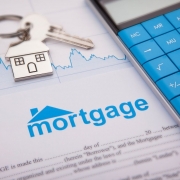Our guide to a self-build mortgage
If you’re considering taking out a self-build mortgage, this guide explains all – from when funds are released, the documentation needed, to the interest rates you can expect.
A self-build mortgage is specifically designed to aid self-builders in building their own home. Instead of funds being released in a lump sum upon completion like traditional mortgages, funds are released at key stages of the project. Rates of interest are also higher than standard house purchase rates.
To progress your application you’ll need to provide plans and a breakdown of the build cost. Remember to add on the cost of your plot and a healthy contingency fund for any issues you may encounter.
When are funds released with a self-build mortgage?
Funds are typically released at these key stages of a self-build project:
- Land (minimum of outline planning consent)
- Substructure
- Wallplate/eaves height
- Roof tiled
- First fix
- Second fix
- Certified completion
For renovation or conversion projects:
- Purchase of existing structure
- Inspected completion of structural survey and cost estimate of necessary works
- Completion of load bearing elements
- First fix
- Second fix
- Completion
How much can I borrow from a self-build mortgage?
The amount you can borrow depends on your own financial circumstances – your income and outgoings as well as any outstanding debts will be used to establish how much you can borrow. Banks create an affordability calculation to assess your borrowing limits.
What can impact my chances of approval for a self-build mortgage?
Where you intend to live while you build will have an impact on your affordability to borrow money to build your home. Any monthly rental or mortgage payments will impact your affordability calculation. If you make upfront rental payments, this will not have an impact.
Each lender’s criteria varies, but you need to ensure they are aware of your build type and any payment terms and conditions stipulated. Some lenders require you to work to a fixed build cost budget; others might request a qualified quantity surveyor to provide the information on the build costs. Also include a minimum of a 20% contingency into your build cost estimate.
As part of your full project costs and budget control estimate that you provide, you’ll need to identify the following costs:
- Land purchase and associated fees
- Project management (including health and safety)
- Gaining planning permission
- Demolition or site preparation
- Construction design fees
- Construction costs
Supporting documentation needed for your self-build mortgage application
The supporting documentation required is the same as a standard mortgage. But additional supporting documentation will be required and may include:
- Planning permission
- Construction drawing and specifications
- Total project cost estimate
- Building Regulations approval
- Site insurance and structural warranty
- Architect’s professional indemnity cover (if required)
- SAP calculation (this will be in the Building Regulations package)
- Experian credit report
An initial valuation will be carried out to establish current value and anticipated end value, too. Other key points to consider:
- A typical timescale for processing a stage release mortgage is up to three months
- Consultants, brokers and banks will carry out a forensic analysis of supporting documents
- They will focus on income and expenditure cross checked with bank statements
Interest rates on a self-build mortgage
Interest rates on a self-build mortgage typically vary from 4-6% per annum, and you may be tied into the lender for between one and three years. Once the property is habitable, some lenders permit the borrow to switch to a lower rate of interest during the ‘tie-in period’ without incurring penalty interest. But watch out for early repayment charges and talk to a broker to find you the best deal.






Leave a Reply
Want to join the discussion?Feel free to contribute!